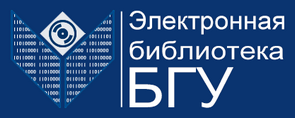Пожалуйста, используйте этот идентификатор, чтобы цитировать или ссылаться на этот документ:
https://elib.bsu.by/handle/123456789/264974| Заглавие документа: | Optical transmission radiation damage and recovery stimulation of DSB: Ce3+ inorganic scintillation material |
| Авторы: | Borisevich, A. Dormenev, V. Korjik, M. Kozlov, D. Mechinsky, V. Novotny, R.W. |
| Тема: | ЭБ БГУ::ЕСТЕСТВЕННЫЕ И ТОЧНЫЕ НАУКИ::Физика |
| Дата публикации: | 2015 |
| Издатель: | Institute of Physics Publishing |
| Библиографическое описание источника: | Journal of Physics: Conference Series; 2015. |
| Аннотация: | Recently, a new scintillation material DSB: Ce3+ was announced. It can be produced in a form of glass or nano-structured glass ceramics with application of standard glass production technology with successive thermal annealing. When doped with Ce3+, material can be applied as scintillator. Light yield of scintillation is near 100 phe/MeV. Un-doped material has a wide optical window from 4.5eV and can be applied to detect Cherenkov light. Temperature dependence of the light yield LY(T) is 0.05% which is 40 times less than in case of PWO. It can be used for detectors tolerant to a temperature variation between -20° to +20°C. Several samples with dimensions of 15x15x7 mm3 have been tested for damage effects on the optical transmission under irradiation with γ-quanta. It was found that the induced absorption in the scintillation range depends on the doping concentration and varies in range of 0.5-7 m-1. Spontaneous recovery of induced absorption has fast initial component. Up to 25% of the damaged transmission is recuperated in 6 hours. Afterwards it remains practically constant if the samples are kept in the dark. However, induced absorption is reduced by a factor of 2 by annealing at 50°C and completely removed in a short time when annealing at 100°C. A significant acceleration of the induced absorption recovery is observed by illumination with visible and IR light. This effect is observed for the first time in a Ce-doped scintillation material. It indicates, that radiation induced absorption in DSB: Ce scintillation material can be retained at the acceptable level by stimulation with light in a strong irradiation environment of collider experiments. |
| URI документа: | https://elib.bsu.by/handle/123456789/264974 |
| DOI документа: | 10.1088/1742-6596/587/1/012063 |
| Scopus идентификатор документа: | 84923240843 |
| Располагается в коллекциях: | Статьи НИУ «Институт ядерных проблем» |
Полный текст документа:
| Файл | Описание | Размер | Формат | |
|---|---|---|---|---|
| Borisevich_2015_J._Phys.__Conf._Ser._587_012063.pdf | 1,06 MB | Adobe PDF | Открыть |
Все документы в Электронной библиотеке защищены авторским правом, все права сохранены.

